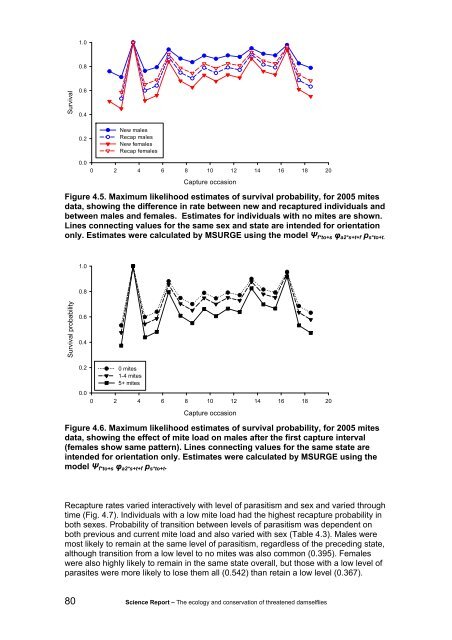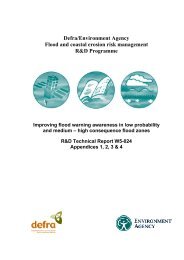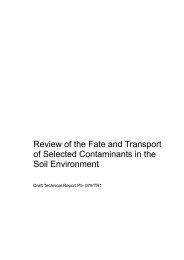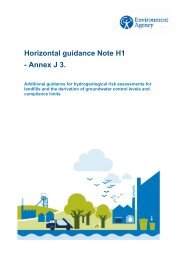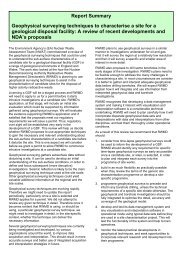The ecology and conservation of threatened damselflies
The ecology and conservation of threatened damselflies
The ecology and conservation of threatened damselflies
Create successful ePaper yourself
Turn your PDF publications into a flip-book with our unique Google optimized e-Paper software.
Survival<br />
1.0<br />
0.8<br />
0.6<br />
0.4<br />
0.2<br />
New males<br />
Recap males<br />
New females<br />
Recap females<br />
0.0<br />
0 2 4 6 8 10 12 14 16 18 20<br />
Capture occasion<br />
Figure 4.5. Maximum likelihood estimates <strong>of</strong> survival probability, for 2005 mites<br />
data, showing the difference in rate between new <strong>and</strong> recaptured individuals <strong>and</strong><br />
between males <strong>and</strong> females. Estimates for individuals with no mites are shown.<br />
Lines connecting values for the same sex <strong>and</strong> state are intended for orientation<br />
only. Estimates were calculated by MSURGE using the model Ψf*to+s φa2*s+t+f ps*to+t.<br />
Survival probability<br />
1.0<br />
0.8<br />
0.6<br />
0.4<br />
0.2<br />
0 mites<br />
1-4 mites<br />
5+ mites<br />
0.0<br />
0 2 4 6 8 10 12 14 16 18 20<br />
Capture occasion<br />
Figure 4.6. Maximum likelihood estimates <strong>of</strong> survival probability, for 2005 mites<br />
data, showing the effect <strong>of</strong> mite load on males after the first capture interval<br />
(females show same pattern). Lines connecting values for the same state are<br />
intended for orientation only. Estimates were calculated by MSURGE using the<br />
model Ψf*to+s φa2*s+t+f ps*to+t.<br />
Recapture rates varied interactively with level <strong>of</strong> parasitism <strong>and</strong> sex <strong>and</strong> varied through<br />
time (Fig. 4.7). Individuals with a low mite load had the highest recapture probability in<br />
both sexes. Probability <strong>of</strong> transition between levels <strong>of</strong> parasitism was dependent on<br />
both previous <strong>and</strong> current mite load <strong>and</strong> also varied with sex (Table 4.3). Males were<br />
most likely to remain at the same level <strong>of</strong> parasitism, regardless <strong>of</strong> the preceding state,<br />
although transition from a low level to no mites was also common (0.395). Females<br />
were also highly likely to remain in the same state overall, but those with a low level <strong>of</strong><br />
parasites were more likely to lose them all (0.542) than retain a low level (0.367).<br />
80 Science Report – <strong>The</strong> <strong>ecology</strong> <strong>and</strong> <strong>conservation</strong> <strong>of</strong> <strong>threatened</strong> <strong>damselflies</strong>


